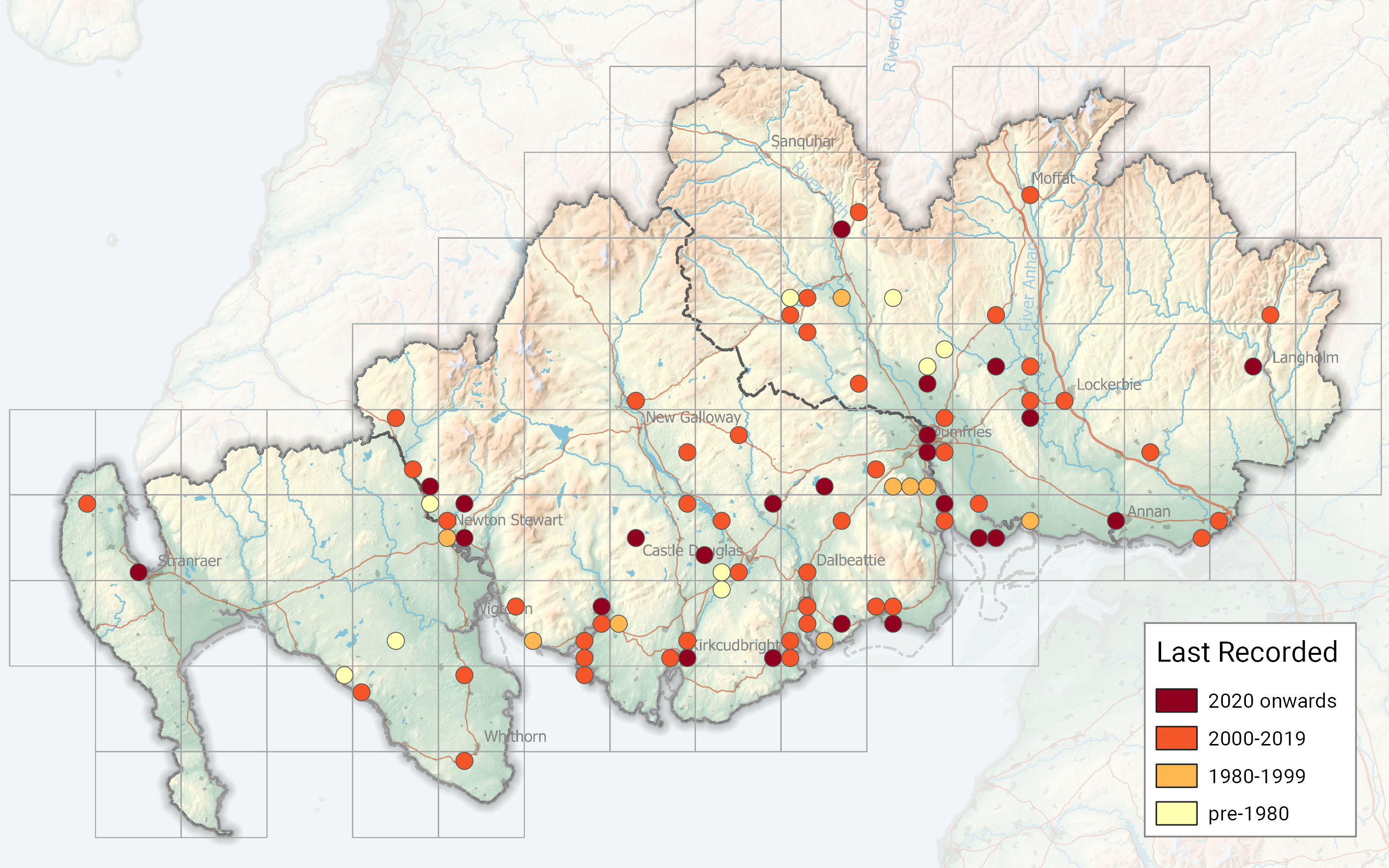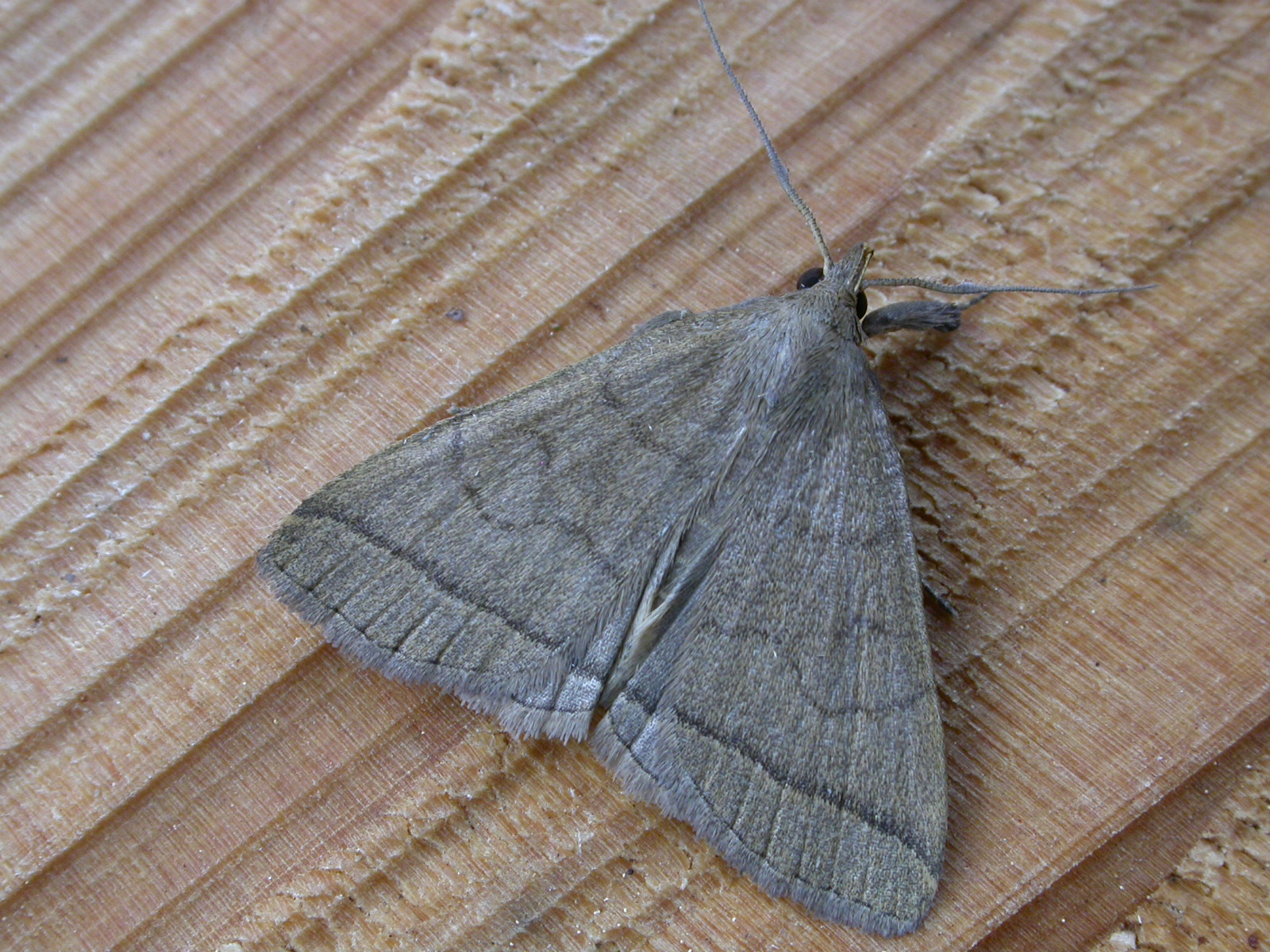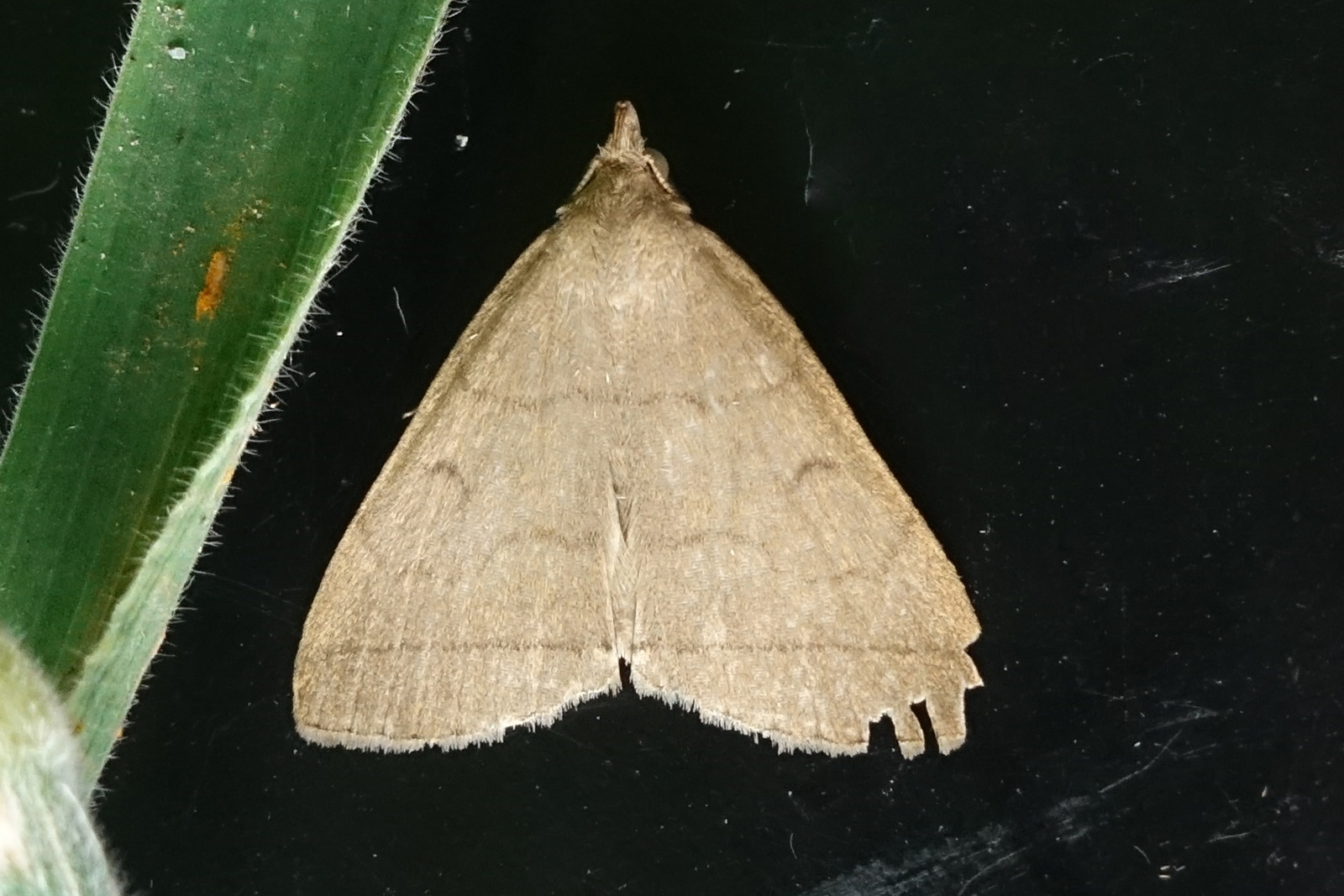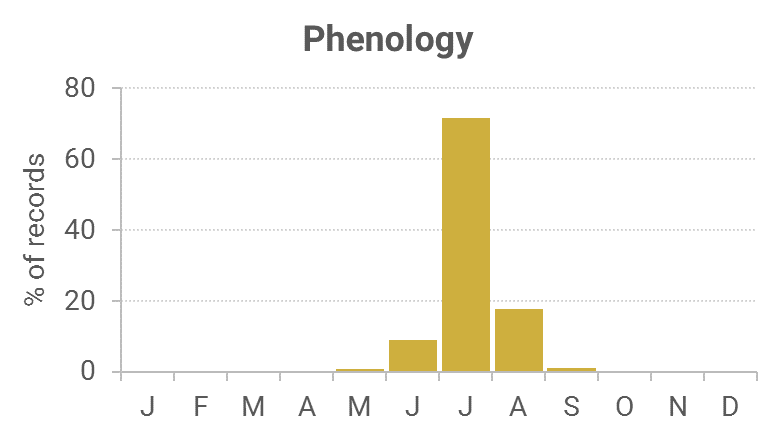Identification
The three cross-lines are more prominent than in the Common Fan-foot which has a whitish hind-wing.
Life cycle
One generation. Overwinters as a fully grown larva during August to April, feeding until October, then forming a cocoon among plant debris, where it pupates in the spring.
Larval foodplants
Beech and oak withered leaves that have fallen to the ground.
Habitat
Broadleaved woodland, gardens and hedgerows.
History 1860-2010
Gordon (1919) stated it to be common locally at Alticry, Luce Bay, and at Corsemalzie on ivy at dusk. Earliest date was 16th June 1911. Sir Arthur Duncan (1909-84) during his lifetime had found it at Closeburn, Tynron and Castlehill, Dumfries (all VC72).
During 1974-93 there were 65 records from six of the Rothamsted stations, Caerlaverock being the odd one out. From 1992 to 2010 there were 130 records recorded, regularly at Kirkton (VC72), with a wide scattering of records elsewhere, but only one was in Wigtownshire, at Forest Moor in 2006.
During 1985-88 specimens were caught at the Rothamsted station in Mabie Forest (VC73) that were totally different to the usual in that they were of a sandy ochreous brown colour. The records were discussed with Bernard Skinner but I can find out nothing else.











